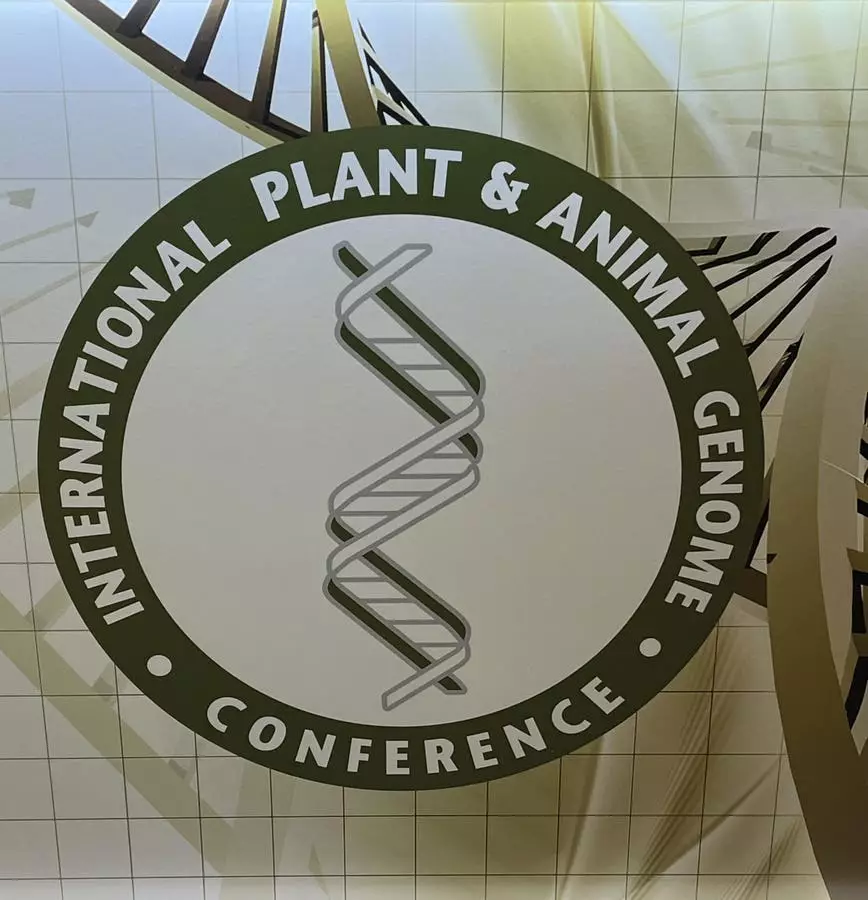The recent Plant and Animal Genomics scientific conference, held in San Diego from January 10th to 15th, marked the 32nd iteration of this significant event, attracting approximately 2,400 participants from 65 different countries. This gathering serves as a vital hub for experts and innovators within the genomics community, where the focus is on not only the academic aspects of genomics but also the practical applications that span various industries, including agriculture, medicine, and biotechnology. With an impressive lineup of presentations, workshops, and interactive sessions, this year’s conference underlined the accelerating pace of genomic research and its implications for the future of food production and sustainability.
Genomics has evolved immensely over recent years, largely due to advancements in DNA sequencing technologies. The history of the Human Genome Project serves as a poignant reference point—initiated with a staggering investment of nearly $3 billion over 13 years to decode the human genome. Fast forward to today, leading companies like Illumina have significantly reduced the costs and time associated with genomic sequencing. They can now analyze individual human genomes within days for roughly $200, showcasing a dramatic shift in the accessibility and affordability of genomic research.
Further advancements come from companies like Ultima, which has leveraged semiconductor technology to enhance sequencing capabilities substantially. By optimizing silicon wafers, Ultima’s machines can process up to 8 billion DNA pieces at a cost nearing $100 per genome. Such innovations are not merely incremental; they open doors to a plethora of research and development opportunities that were previously unattainable, especially for smaller institutions and startups.
The conference featured an extensive array of presentations, workshops, and networking opportunities, all aimed at exploring current trends and future trajectories within the realm of genomics. The palpable enthusiasm for job prospects in the industry was illustrated by the numerous job listings posted throughout the event, hinting at a robust growth trajectory within the field.
With advancements in genomic tools, researchers can undertake comprehensive genetic analyses that were once thought feasible only for large agricultural enterprises. Crop improvement projects span diverse species, from staple grains like wheat to exotic fruits such as mangoes and pomegranates. Notably, the conference underscored discussions surrounding climate adaptation and the ways modern genomics can facilitate significant progress in crop resilience and sustainability.
Innovative Crop Improvement Techniques
Three significant methodologies have emerged as focal points for crop genetic enhancement at the conference: Marker Assisted Breeding (MAB), Genome Editing, and the creation of Transgenic Crops. MAB employs traditional breeding techniques but refines this approach by utilizing genetic markers to identify desirable traits. This method is particularly effective with perennial crops, where traditional breeding can take several years to yield results. By pinpointing essential genes at the seed level, MAB accelerates the breeding process and helps produce superior crop varieties faster.
Genome Editing, another revolutionary technique, facilitates precise modifications within the existing DNA of an organism without introducing foreign genetic material. This method simplifies the process of enhancing specific traits, making it a popular approach among researchers looking for efficiency and precision.
Transgenic Crops, characterized by the intentional introduction of beneficial traits from different species, represent a more controversial aspect of genetic modification. While this technique can result in significant agricultural advancements, its acceptance varies greatly depending upon the regulatory environment within different regions.
Regulatory Challenges and Global Perspectives
A significant discussion point during the conference was the regulatory landscape surrounding genetic modification. In the United States, frameworks are evolving to accommodate diverse genetic techniques, with agencies like the USDA, EPA, and FDA encouraging collaborative discussions between regulators and developers to streamline processes. However, the international landscape is less clear-cut, particularly in regions like the European Union, where regulatory uncertainties could hinder the adoption of innovative genetic techniques.
Despite decades of research, the lack of international consensus on regulatory standards may stifle progress, as the fear of brand protectionism and unresolved regulations pose significant challenges to the full realization of genomic potential.
Looking Ahead: The Potential of Genomics
The discussions at the Plant and Animal Genomics conference provide a glimpse into the transformative potential of genomics in meeting pressing global challenges, particularly those related to climate change and food security. While hurdles remain, the momentum generated within the genomics community holds promise for future innovations that could revolutionize agricultural practices and improve sustainability. As genomic technologies become increasingly accessible and affordable, the scientific community remains optimistic about their capacity to address critical issues and enhance food production systems worldwide. Leveraging advanced genomic techniques can play a pivotal role in shaping the future of agriculture, ensuring both environmental stewardship and food security for generations to come.

